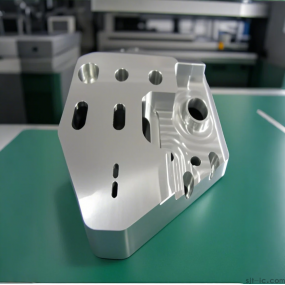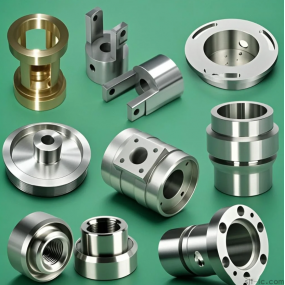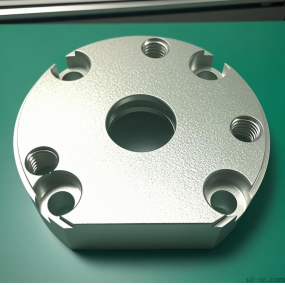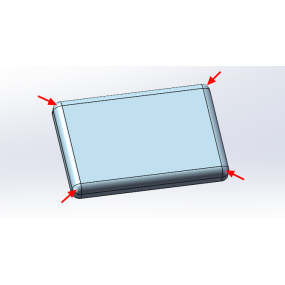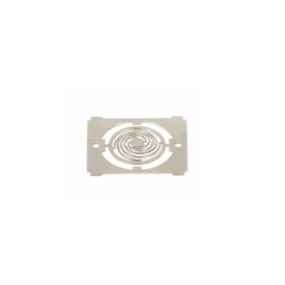The vibration pattern phenomenon on the surface of the end point machine shell during processing may be caused by a variety of factors, such as too fast feed and cutting speed, insufficient rigidity of the machine tool and tool holder, too large back angle during processing, workpiece not clamped, and processing parameters, tool selection and workpiece clamping stability. In response to these problems, the following measures can be taken to solve the vibration pattern phenomenon:  Adjust the processing parameters: According to the specific processing situation, adjust the parameters such as feed speed, speed and cutting depth appropriately to achieve good processing effect. Avoid too fast feed and cutting speed to reduce the generation of vibration pattern. Choose the right tool: According to the workpiece material and processing method, choose the right tool and ensure that the tool is in good condition. The sharpness and durability of the tool are essential to reduce the vibration pattern. Ensure the stability of the workpiece clamping: Optimize the clamping scheme and improve the fixture design to improve the stability of the clamping and the clamping force of the jaws. Make sure that the workpiece does not move or rotate during processing to reduce the generation of vibration pattern. In addition, the following points can also be considered to further reduce the vibration pattern phenomenon: Perform regular maintenance and inspection of the machine tool to ensure its precision and stability. Carry out adequate pre-treatment of the workpiece before processing, such as cleaning, deburring, etc., to reduce the unstable factors in the processing process. Introduce good processing technology and equipment, such as the use of numerical control machine tools, high-precision tools, etc., to improve the machining accuracy and stability.
Adjust the processing parameters: According to the specific processing situation, adjust the parameters such as feed speed, speed and cutting depth appropriately to achieve good processing effect. Avoid too fast feed and cutting speed to reduce the generation of vibration pattern. Choose the right tool: According to the workpiece material and processing method, choose the right tool and ensure that the tool is in good condition. The sharpness and durability of the tool are essential to reduce the vibration pattern. Ensure the stability of the workpiece clamping: Optimize the clamping scheme and improve the fixture design to improve the stability of the clamping and the clamping force of the jaws. Make sure that the workpiece does not move or rotate during processing to reduce the generation of vibration pattern. In addition, the following points can also be considered to further reduce the vibration pattern phenomenon: Perform regular maintenance and inspection of the machine tool to ensure its precision and stability. Carry out adequate pre-treatment of the workpiece before processing, such as cleaning, deburring, etc., to reduce the unstable factors in the processing process. Introduce good processing technology and equipment, such as the use of numerical control machine tools, high-precision tools, etc., to improve the machining accuracy and stability.
Hello! Welcome to EMAR's website!
 English
English » »
» »
 Spanish
Spanish Arabic
Arabic French
French Portuguese
Portuguese Belarusian
Belarusian Japanese
Japanese Russian
Russian Malay
Malay Icelandic
Icelandic Bulgarian
Bulgarian Azerbaijani
Azerbaijani Estonian
Estonian Irish
Irish Polish
Polish Persian
Persian Boolean
Boolean Danish
Danish German
German Filipino
Filipino Finnish
Finnish Korean
Korean Dutch
Dutch Galician
Galician Catalan
Catalan Czech
Czech Croatian
Croatian Latin
Latin Latvian
Latvian Romanian
Romanian Maltese
Maltese Macedonian
Macedonian Norwegian
Norwegian Swedish
Swedish Serbian
Serbian Slovak
Slovak Slovenian
Slovenian Swahili
Swahili Thai
Thai Turkish
Turkish Welsh
Welsh Urdu
Urdu Ukrainian
Ukrainian Greek
Greek Hungarian
Hungarian Italian
Italian Yiddish
Yiddish Indonesian
Indonesian Vietnamese
Vietnamese Haitian Creole
Haitian Creole Spanish Basque
Spanish Basque


